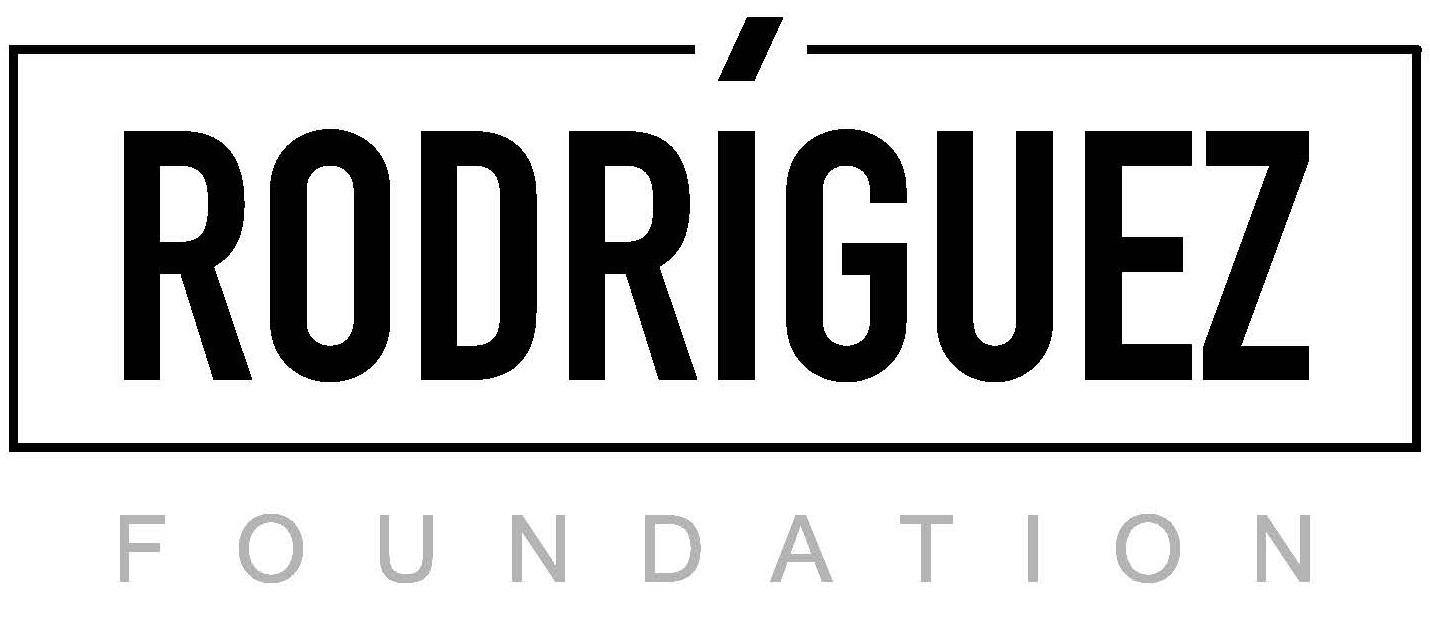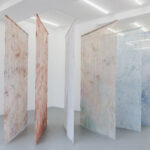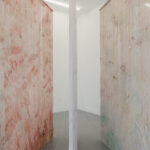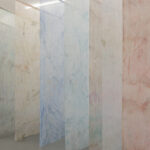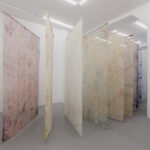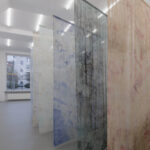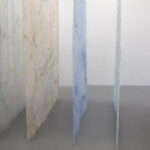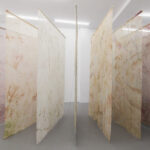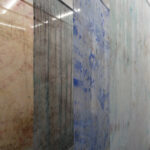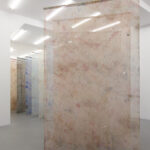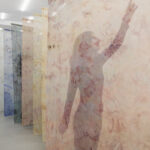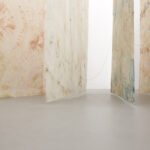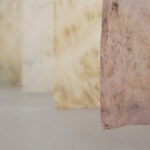Julia Llerena
Autumn Moon over Still Lake
04 - 30.10.2024
A landscape half-dreamed, imagined, from behind closed eyelids
Woven from intertwining layers, fragments of daily life, feelings, raptures
Rhythmically, melodiously
Unveiled through movement, mindfulness, and sensation
Seemingly elusive, translucent, and yet so tangible
From behind a matte fog, it reveals new layers and glimpses
So delicate and fragile that one must whisper not to startle its intimacy
A landscape half-dreamed, so corporeally close, so personal
The work on the exhibition coincided with the raising of my two children. Every night, I would first put my 14-month-old son to sleep. It all starts in a darkened room with only the faint light of night coming in through the window. We are both lying down and, as I cover him, Cantonese music plays in the background. At that moment, we both enter a gentle nocturnal trance, he towards a deep slumber, I towards a feeling of peace and the daydream state in which I usually travel through various stages of life, past and imagined. I think that when lying down one can see differently inside oneself, as if, with the body at rest, thoughts are felt from a different place. One night, when his eyelids were already drooping and I was feeling completely at peace, I read the title of the song we were listening to: Autumn Moon over Still Lake (平湖秋月; pinyin: Píng Hú Qiū Yuè). It was a Cantonese piece written by Lü Wencheng in the 1930s. He composed the music during a visit to the famed West Lake in Hangzhou, and it perfectly encapsulates his profound respect for the beauty of the landscape. Since ancient times, the West Lake has been considered a place of peace and serenity. Through the power of intuition, everything suddenly made sense and came together on one path, I combined music and its meaning with my own artistic practice. The transparent materials on which I randomly apply pigments, watercolours and ink, onto which I sew small objects and metal chains, were no longer merely a poetic impulse, but became a sensory landscape as well. Without realizing it, I transferred the colours of the earth, the sunset, the green of water, dry leaves—all akin to the shades of autumn—onto the materials. I evoked a future memory, of another place, perhaps that remote West Lake in Hangzhou.
In the exhibition, this place exists vertically, like a zen landscape, like a haiku. A quiet and serene scenery in which to be, to fall asleep, a place imagined with the eyes closed, which we now happen to open here, on a day of autumn.
According to the Spanish essayist and poet Ramón Andrés, our condition is that of longing beings, so that as we stay in one place, we dream of others. Physically, we situate our bodies here, but the rest is there, on the borderlines between the realms of the conscious and the unconscious. In this installation, lights, shades and shadows overlap and accrue, as if seeking to reveal further layers of reality in which the perception of ourselves becomes blurred. Asleep in the world of the awake or conscious in the world of those who sleep.
